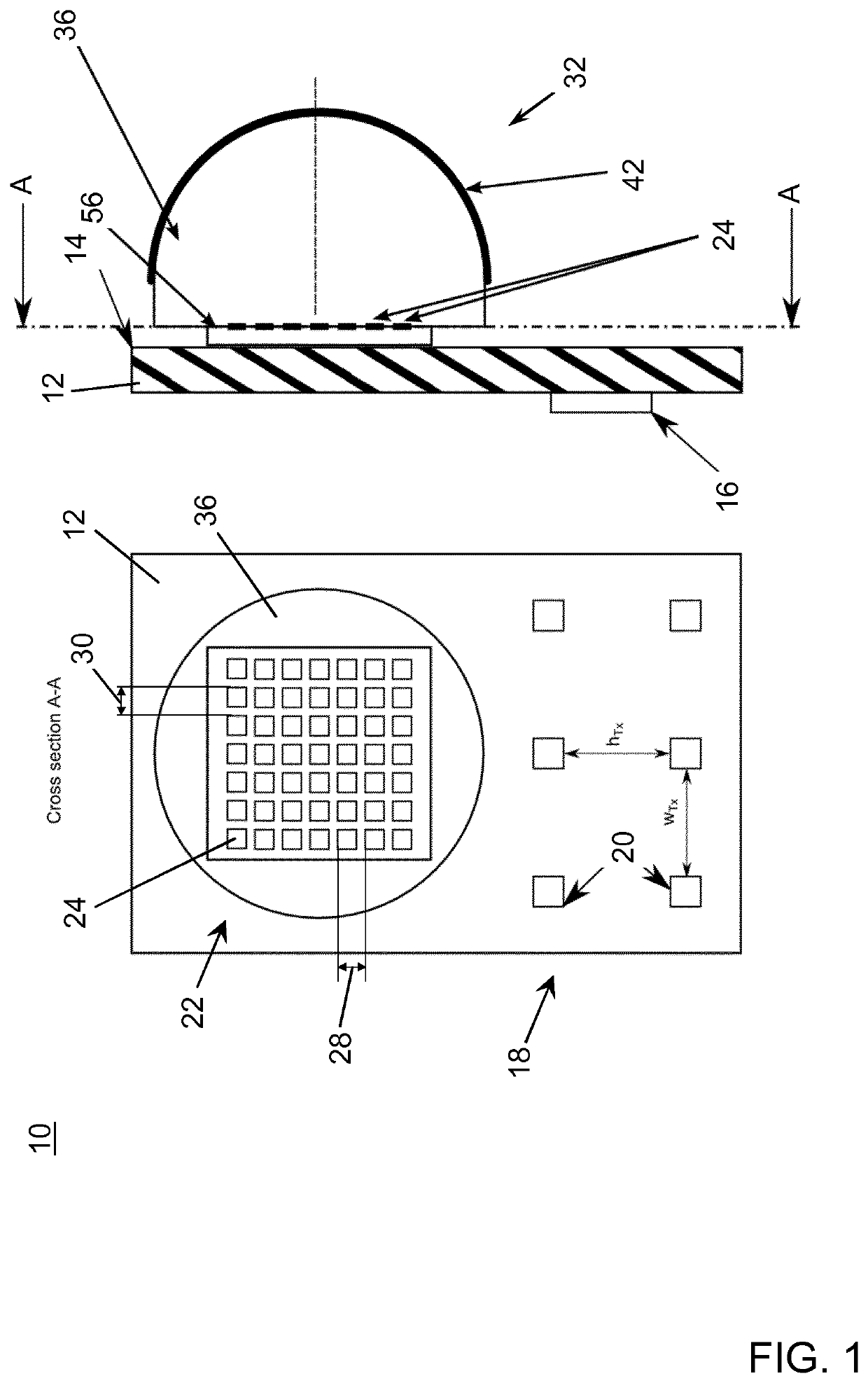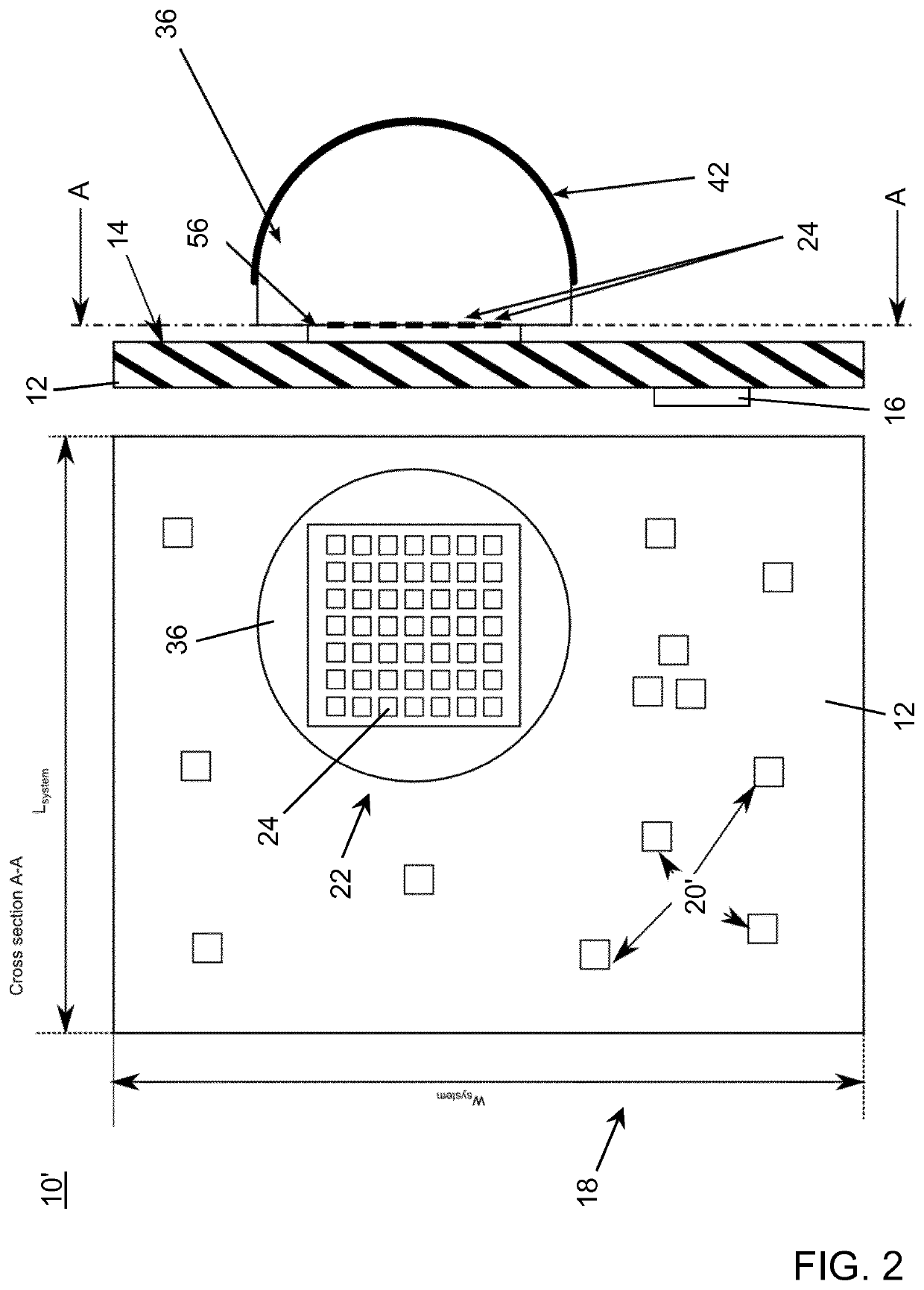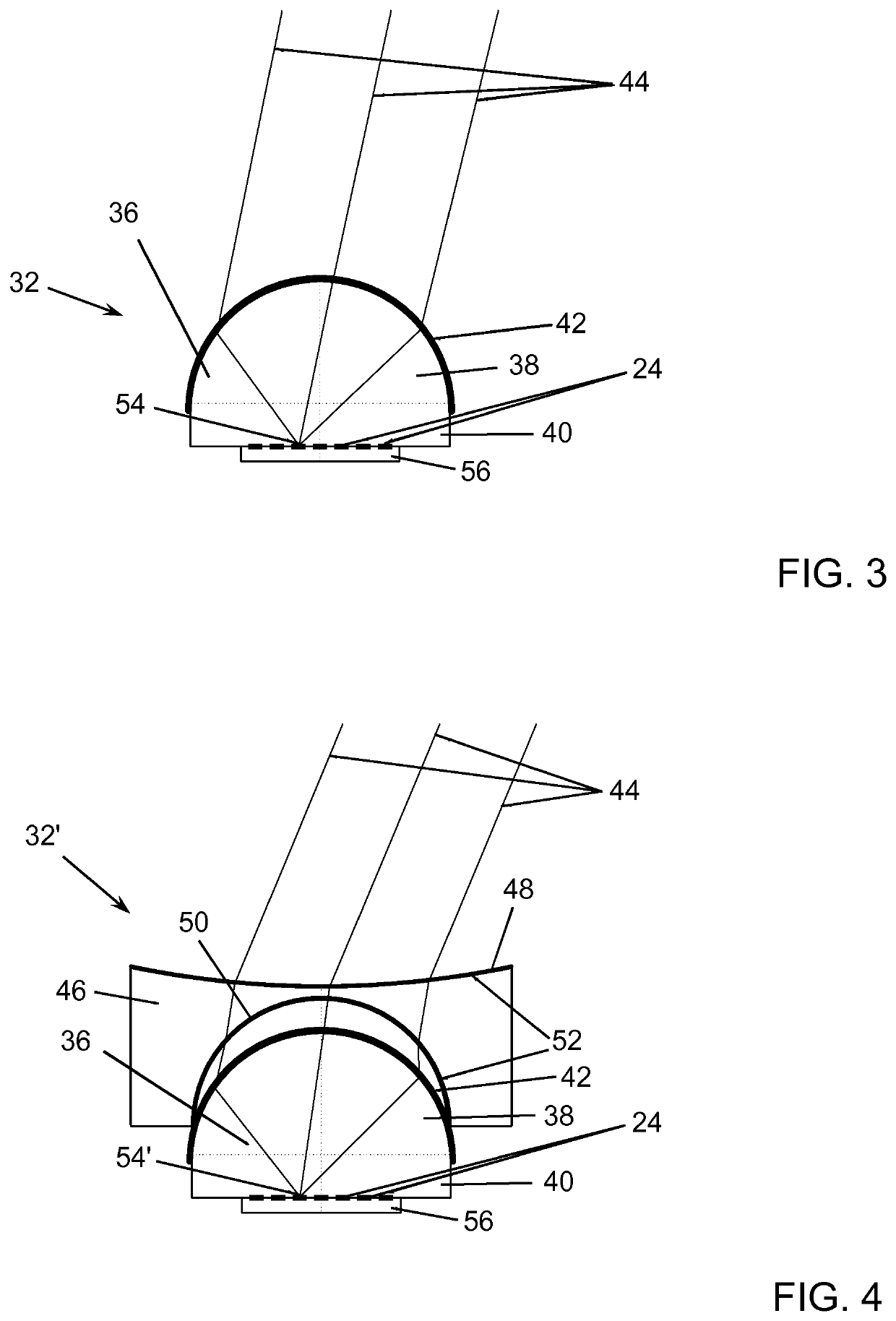High-resolution 3D radar wave imaging device
a high-resolution, radar wave technology, applied in the direction of protective material radiating elements, polarised antenna unit combinations, instruments, etc., can solve the problems of insufficient azimuthal and elevational resolution of current radar devices, ambiguity in angular reconstruction, etc., to improve the characterization of objects in the scene, reduce or even eliminate the effect of almost eliminating
- Summary
- Abstract
- Description
- Claims
- Application Information
AI Technical Summary
Benefits of technology
Problems solved by technology
Method used
Image
Examples
Embodiment Construction
>[0077]FIG. 1 schematically illustrates a possible embodiment of the radar wave imaging device 10 in accordance with the invention. The radar wave imaging device 10 includes a radar transmitter unit 18 and a radar receiving unit 22.
[0078]The radar transmitter unit 18 comprises a plurality of six radar transmit antennas 20 that are regularly arranged as a two by three two-dimensional array on a right side portion of a front surface 14 of a substrate plate 12 and connected to a transmitter circuitry 16. The radar transmit antennas 20 are directed towards a scene in front of the substrate plate 12. The scene may comprise objects, temporarily forming part of the scene, that are to be detected by the radar wave imaging device 10. The radar transmit antennas 20 of the radar transmitter unit 18 are configured for transmitting radar waves towards the scene. It should be noted that the transmitter circuitry 16 may be arranged below the substrate plate 12 as shown in FIG. 1, but it could also...
PUM
 Login to View More
Login to View More Abstract
Description
Claims
Application Information
 Login to View More
Login to View More - R&D
- Intellectual Property
- Life Sciences
- Materials
- Tech Scout
- Unparalleled Data Quality
- Higher Quality Content
- 60% Fewer Hallucinations
Browse by: Latest US Patents, China's latest patents, Technical Efficacy Thesaurus, Application Domain, Technology Topic, Popular Technical Reports.
© 2025 PatSnap. All rights reserved.Legal|Privacy policy|Modern Slavery Act Transparency Statement|Sitemap|About US| Contact US: help@patsnap.com



